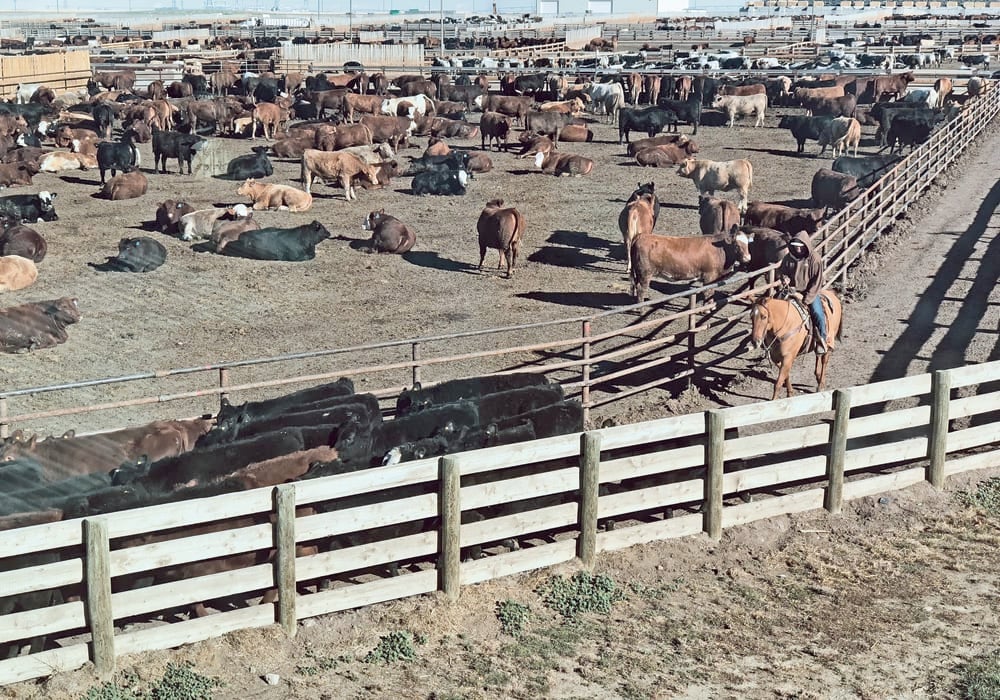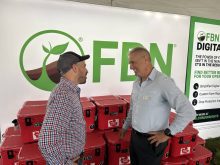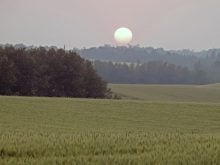Agriculture is the lifeblood of Lethbridge County. In fact, the southern Alberta municipality has proven to be the beating heart of agriculture in the province, annually generating $2.2 billion in gross farm receipts.
That’s more than twice that of the next most agriculturally prosperous district, which is the neighbouring Municipal District of Taber. Vulcan County, a neighbour to the north, is third.
Lethbridge County contracted Serecon, a consulting group that specializes in agriculture, to undertake the study and its findings were reported to council in mid-October. It is the second such study, enabling officials to gauge changes since the last national census data was available.
Read Also

Squid fertilizer draws interest at Ag In Motion
GreenFlow says its Squid Juice might elicit a smile or chuckle, but insists the fertilizer and its benefits are for real.
“We’ve been talking about the ag food hub and the importance of agriculture to the area, so we wanted to make sure those numbers were what we thought they were,” said reeve Lorne Hickey.
“We didn’t know that the numbers would be quite as big as they were.”
In absolute dollar value increases in gross farm receipts over the five years from 2011-16, Lethbridge growth exceeded all other Alberta municipalities at more than $950 million, the study said.
The feedlot industry generates the bulk of farm receipts at $1.6 billion, which is 80 percent of the county total, the study said. The crop sector generates another $432.7 million.
“Intensive livestock operations in Lethbridge County are a value-creating industry that is continually growing,” said the report. “With this high level of activity comes a large tonnage of grain being moved through the county plus a large amount of manure. This large demand for cattle finishing grains has supported a subsector industry of central irrigation, which supplies these grains,” said the study.
“Lethbridge County is perceived as a hotbed especially for feedlot operations, but more generally for intensive livestock operations.”
Serecon reported that the entire Alberta livestock and poultry market has a value of more than $11 billion, 40 percent of which is in the south.
In Lethbridge County, the market value of livestock and poultry surged more than 200 percent to $1.1 billion in 2016 from about $358 million in 2011.
It’s a big number for a county with an estimated 2016 population of just more than 10,000 people and an area of 2,835 sq. kilometres.
“The feeding industry makes a huge difference in those numbers, the livestock end of it, and we have pretty much the ideal climate here to foster that along, so I think that’s one of the things that makes a big difference,” said Hickey.
The 2016 census estimated there were 477,807 feeder cattle in the county, which are turned through the system at an average 2.5 times per year.
“It gives you an idea of the sheer size and scope,” said Lethbridge County economic development officer Martin Ebel.
“There’s a reason that the area along the Oldman River, centred around the town of Picture Butte, is called feedlot alley, because there’s 10 percent of Alberta’s cattle right there.”
Cattle feeding is “far and away the biggest contributor” to the county’s gross domestic product, Ebel said.
The increase in economic contribution relative to the previous census is related more to higher prices than to a marked expansion of the feedlot sector, he added, and though numbers paint a rosy current picture, they must be viewed with caution.
“It looked great this particular snapshot in time but… there’s considerable volatility and fluctuation.”
Dairy contributes nearly $95.6 million to the county’s economy, said the study, and a $32 million contribution to the GDP from an estimated 9,272 dairy cows.
Ebel said specialty crops such as potatoes and sugar beets have modest acreage in the county compared to other crops but their value is high compared to cereals, for instance. However, figures showed wheat is the highest contributing crop to the county’s GDP, followed by barley and canola.
The county derives less than 10 percent of its taxes from oil and gas activity, unlike some other rural municipalities that are struggling with lower tax revenues from the energy sector.
Hickey said the data will be used in county efforts to attract more processors to the region.
“As far as we’re concerned, if you produce it here, you should be able to market a finished product instead of exporting so much of your potential to other countries,” he said.
“I think ($2.2 billion) is a positive number and it’s certainly a positive sign that agriculture is doing quite well. This is a region that wants to expand and wants to have that secondary industry here, rather than just produce things.”
Ebel said the data will be useful when speaking with the provincial and federal governments about the need for infrastructure funds. It’s also valuable to foster more economic development.
“I’m looking to kind of market the county and to develop industry and especially value-added industry…. Let’s do the processing here. Let’s add the value here.”
The county and other Alberta municipalities along Highway 3 have been developing a plan to fashion themselves as “Canada’s Premier Food Corridor.” Ebel said the study results will help in that effort.


















